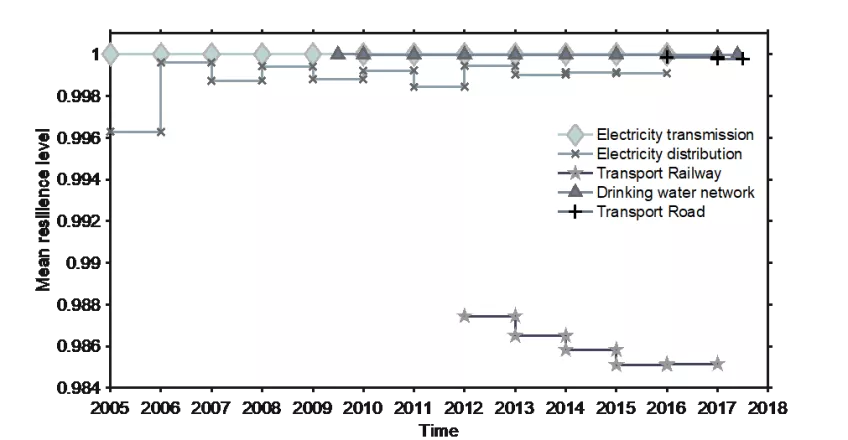Contrasting Critical Infrastructure Resilience from Swedish Infrastructure Failure Data' J. Johansson, R. Jonason Bjärenstam, E. Axelsdóttir Extended Abstract Events such as the European blackout in 2006, the Eyjafjallajökull eruption in 2010 and Hurricane Sandy in 2012 (Johansson et al., 2015), reveals the need for approaches and measures aiming at increasing critical infrastructures robustness and rapidity of recovery, in essence their resilience. During the last years there have been ample contributions of approaches with this aim. The most common approach is to assess resilience in terms of the system’s functionality for a specific event and time period; including expert based (e.g. Hosseini et al., 2016, Hassel & Johansson, 2016), modelling and simulation based (e.g. Panteli et al., 2017), and empirical data based methods (e.g. Johansson et al., 2015; Zorn & Shamseldin, 2015). Limited attention has been given for contrasting and comparing the resilience of critical infrastructures by using empirical failure data. Here a generic resilience assessment approach towards this end is presented and applied for five critical infrastructures in Sweden. The approach is naturally bounded by the parameters and granularity of the data as collected by infrastructure owners or regulatory authorities. Normally only start time, end time and maximum functionality loss (FL) is given for individual incidents, hence not reflecting the widely spread “resilience curve” in the academic literature. In Figure 1 and Table 1 resilience levels for the infrastructures are presented. In the full paper histograms of duration and functionality loss for each of the infrastructures are also presented together with a more thorough discussion of the approach and the results. It is concluded that the approach is applicable for a unified comparison of different types of critical infrastructures. Most resilient are Electricity transmission and Water supply, and less resilient are Transport railway and Electricity distribution. The results also reveal differences in how resilience is achieved, where some infrastructure focus on limiting duration (e.g. Electricity transmission) and some on limiting the consequences (e.g. Water supply). The results are valuable as input for policy making and for further studies of the influencing factors, e.g. regulation, design philosophies or risk cultures, that are shaping the resilience of our critical infrastructures.
References Hosseini, S., Barker, K., & Ramirez-Marquez, J. E. (2016). A review of definitions and measures of system resilience. Reliability Engineering & System Safety, 145, 47-61. Johansson, J., Hassel, H., Cedergren, A., Svegrup, L., Arvidsson, B., (2015). Method for describing and analysing cascading effects in past events: Initial conclusions and findings, ESREL 2015, Zürich, Switzerland, September 7-10. Hassel, H., & Johansson, J. (2016). Review of methods for measuring societal resilience and how they address critical infrastructures. ESREL 2016, Glasgow, Scotland, UK, September 25-29. Panteli, M., Mancarella, P., Trakas, D., Kyriakides, E., & Hatziargyriou, N. (2017). Metrics and Quantification of Operational and Infrastructure Resilience in Power Systems. IEEE Transactions on Power Systems, 32(6), 4732-4742. Zorn, C. R., & Shamseldin, A. Y. (2015). Post-disaster infrastructure restoration: A comparison of events for future planning. Int. J. of Disaster Risk Reduction, 13, 158-166. |
Artikel om Sveriges Infrastrukturers Resiliens
CenCIP-forskare presenterar en artikel vid konferensen ESREL2018 i juni i Trondheim, Norge. I artikeln jämför vi några av Sveriges kritiska infrastrukturers resiliens utifrån avbrottsdata och drar slutsatsen att relativt stora skillnader existerar. Ett vidare arbete blir att undersöka orsakerna till dessa skillnader, beror de på skillnader i regleringar, riskkultur eller helt enkelt hur utsatta systemen är?


